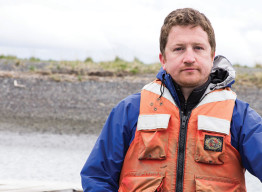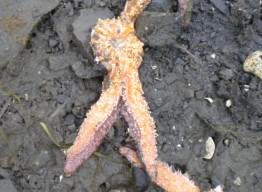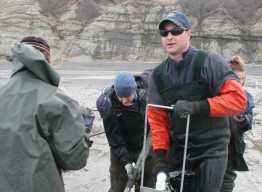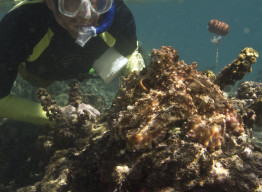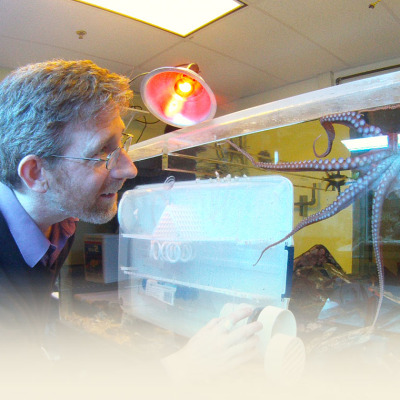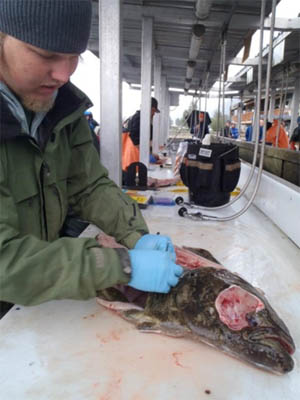Professor David Scheel’s internationally recognized octopus research took him to Cairns, Australia, this summer where he participated in a conference and joined a colleague for a bit of recreational diving…
Marine Biology
From Ireland to the Great Land
Getting to Know APU’s Visiting Fulbright Scholar: Jay Calvert by Miriam Mezzetti Alaska Pacific University is proud of its remarkable faculty and students. With the quality, personalized educational experience here,…
APU’s Alaska Octopus Project First to Report Seastar Wasting Syndrome in Prince William Sound
By David Scheel The Alaska Octopus Project of Alaska Pacific University is the apparently the first to report sea star wasting syndrome in Prince William Sound, AK. The Alaska Octopus…
Alaska Pacific University’s Dr. Brad Harris Reports Back from Hawaii
By Brad Harris, Professor of Marine Biology In late February, I spent three days in Honolulu, Hawaii at the National Science and Statistical Committee meeting discussing ways of incorporating information…
Alaska Pacific University Marine Biologist, David Scheel, Featured in Popular Science Book Series for Kids
If you’re the parent of a student in grade school or middle school, you’ve probably come across one or more of the 40 odd books featured in the Scientists in…
Daily News readers gain insight into University’s long-term study of giant Pacific octopus
Anchorage Daily News readers learned about the University’s pioneering research on the little-understood giant Pacific octopus and whether its lineage includes a new species. Following her visit to the 1,000-gallon…
Law seminar highlights Cornick’s research on Cook Inlet belugas
Associate Professor Leslie Cornick was among invited presenters at a continuing-education seminar for lawyers focusing on the Endangered Species Act in Alaska. Cornick is a regionally ranked expert in Cook…
Interactions between Atlantic spotted (Stenella frontalis) and bottlenose (Tursiops truncatus) dolphins off Bimini, The Bahamas 2003 –2007
Interactions between Atlantic spotted (Stenella frontalis) and bottlenose (Tursiops truncatus) dolphins off Bimini, The Bahamas 2003 –2007. Published in Aquatic Mammals, Oct. 1, 2011 Kelly Melillo, MSES, 2007 Interspecific interactions…
Effects of environmental variables on Giant Pacific octopuses
In review at Journal of experimental marine biology and ecology Lauren Bisson, MSES, 2011 We attached sonic transmitters to, and tracked, 40 giant Pacific octopuses (Enteroctopus dofleini) ranging in size…
Determining Age and Growth Rates in Centroscyllium nigrum, Pacific Black Dogfish, Utilizing Fin Spine and Vertebrae Analysis
With my project, my goal is to determine whether or not age and growth rates can be determined in the species C. nigrum using dorsal fin spines and vertebrae. Counts…

